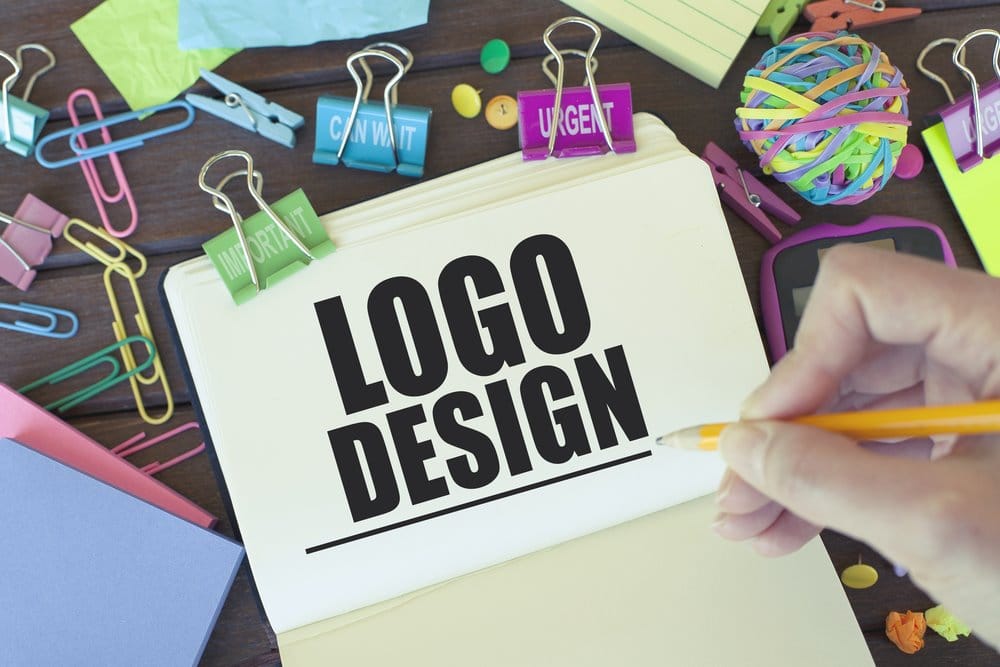 Do you feel like you are drowning in a sea of containers? You are! Most consumer products must be contained in some kind of packaging. Consumer products are, well, consumed on a daily basis, and all those packages add up. Most of them are single use. They must contain your product from your production facility until your customer has “consumed” them.
Do you feel like you are drowning in a sea of containers? You are! Most consumer products must be contained in some kind of packaging. Consumer products are, well, consumed on a daily basis, and all those packages add up. Most of them are single use. They must contain your product from your production facility until your customer has “consumed” them.
Beyond that, these short-lived containers must serve a multitude of masters. And just not satisfying one of them can cause a collapse in your distribution process both figuratively and literally. A mistake or miscalculation in package design can stop your product from getting to your customer, even if you have done everything else right.
You will have to decide on at least two packaging designs: The package your customer uses to gain access to your product and the larger package that contains those individual packages. Also known as the shipping carton, case, or shipper, we have found that most consumer product producers underestimate the importance and marketing potential of this larger multi-pack container. Even though it may never see its way onto the retail shelf, its design is critical to sales, distribution, and merchandising.
Your packaging designs, both single and multi-pack, must be strong, compliant, compelling, and responsible. Let’s take a look at how these requirements can affect distribution and sales of your products:
Practical
(physically strong and stackable with size, fit, weight, and volume compatible for pallet handling)
Practicality starts with the realities of the retail environment. You don’t have the options of all possibilities. On the contrary, you must satisfy the very real conditions of retail shelf. Your merchandisable single-item container must fit on the shelf.
We know that sounds obvious. But we’ve seen packages that were designed without respect to the height limitation of the retail shelf in a specific category. The stores want to save space so they set their shelving to the minimum height that will accommodate the majority of products that already exist in your category. This forces you to design within those limitations or have your product stuck on top where your customers can’t reach. Or worse, your product cannot even make it to the shelf.
Consumer products are tightly packed on the shelf. This is to allow for the most products to fit side-by-side with no wasted space between them. Each iteration of your product is called a facing. You want to design packages that maximize the number of facings possible for your allotted space.
Stable
Your package design must take into consideration stability. That means that designs with narrow footings and broad tops that may look more attractive are actually less stable. They can tip over when squeezed by other facings alongside them.
Durable
Your shipping carton must be durable enough to protect your product in the handling and merchandising process. It will get thrown around, dropped, and possibly crushed. How does it stand up?
The 40-44-foot long containers that you see on the back of 18-wheeler semi rigs rolling down the highway are the backbone of the American consumer products distribution system. In countries where trucks that long can’t get around the tighter corners, it’s a 20-foot long container. The 40-44 foot container is the most efficient way of moving consumer products from a production facility to a distributor or large retail warehouse. They too are limited in size and weight due to the infrastructure upon which they traverse.
Inside those containers are up to 11 pallets in 2 rows side by side equaling 22 pallets. Each pallet has cartons of packages stacked on it. This stack is limited by the 4 foot by 4-foot pallet footprint and the gross weight allowed on a full pallet. Good carton designers will start with this reality and work backward to discover the number of units in each carton and the maximum cartons they can fit on a pallet to make the most efficient use of space and weight. This design consideration can significantly reduce your shipping costs.
Allows for Human Handling
The shipping cartons have their own limitations. A human must be able to lift it. That means they should not exceed 35-40 pounds. The European Union has even stricter requirements and generally cuts that weight in half.
Also, and apparently obvious, your cartons must add protection to your packaged products, be somewhat moisture resistant, and not collapse under the sheer weight of the cartons stacked above them on the pallet or on a floor display.
If your product hangs on pegs, it is still subject to the carton requirements but will have its own set of practical requirements.
So, make sure that your creative packaging designs start with practicality. Your package, no matter how imaginative, must fit into a handling, distribution, and merchandising system that was there long before your product and package design. First, you have to fit into the system.
Custom Packaging for Big Box Stores
Oh, and don’t forget custom packaging for the big box stores. They may want you to provide cut-down cases to display your product and shrink wrap your specially stacked pallets with special pallet signage on 4 sides. You may have to engage the services of a repacker to accommodate these Big Boys, but the volume of sales is generally worth it.
Labeling Compliance
(indicates size, weight, legalities, contents, and brand information)
So now you have practical package designs. But you are still far from done! Now you must get that package through the distribution system. This requires the application of several types of information to your packages.
Let’s start with the shipping carton:
First, it has to state the brand and contents and display any all scan bars, stock numbers and routing codes.
Then, it has to say which way is up, if it’s fragile, if it’s temperature or moisture sensitive, and any special handling instructions. Also, it must indicate how many units are in the carton. Is it a 6-pack, 12-pack, 24 pack or more?
Then it has to give the weight of the carton in total along with its liquid or dry volume. It may have to indicate the individual pack’s weight and volume as well.
All this has to be at a size that is compliant with government regulations, retailer requirements, or practical readability from some distance in a dimly lit warehouse. This can use up a significant amount of space and may have to be on more than one side.
As far as the product unit packaging that your customer sees on the shelf, you face many of the same challenges. But these requirements must fit on the front and back labels, or, if your package is a box, on the sides.
So far, we haven’t done any artistic or marketing designs. So far, we’re just determining how much space you have left to be creative.
 Marketing
Marketing
(displayable, point of purchase, carton graphics)
Back to the shipping carton. It’s a proven fact that more product sells from the retail floor than it does from the shelf. If you are fortunate enough to garner a floor display, that typically means that your shipping cartons will be used to stack your products and will be visible to your customers.
Shipping carton designs should take this into consideration with marketing graphics that carry a theme and enhance the overall look of your multi-case display. More displays not only result in more volume sale, but they are the easiest way for new customers to discover your products. Your compelling shipping package design can actually influence the buyer to give you a floor display.
Keeping this in mind, the shipping carton sides will be visible from up to 20 feet away. This calls for some large-scale carton graphics that tie multiple cases together when stacked into a thoughtfully orchestrated and compelling billboard for your products.
These cartons are often cut down to expose the contents. Be thoughtful about where you put your brand name and contents so they won’t be cut away to display your products. Some packaging designers will even indicate the cut lines on the shipping cartons for this purpose. Further, they will deliberately put their brand name and contents at the very bottom. So that when cartons are cut down their name and contents will still be visible.
Carton sides are a great place to display a larger version of your logo. We recommend a crisp, clear, simple logo that will be impressive from a distance in the retail store. This practice also helps tremendously in the warehouse for identification and sorting purposes.
Color Coding for the Warehouse
Another way to prevent confusion in the warehouse is to color code your cartons and your individual product packaging based on the type of product. It not only helps to prevent mistakes in the distribution system which can cause mis-deliveries and prevent sales, but it helps your customers identify the various types you offer in your range.
The point of purchase is the most effective place to get your marketing information across to your customer. It is the only place where your product, your customer, their money, and their decision all come together. Your product package is the best place to display the most compelling reasons to buy your product. This includes accolades, desirable attributes and third-party endorsements. By putting these on the package itself, unlike separately applied shelf signs, you guarantee that this important message makes it to the shelf every time.
Product packaging design is more of a solution than a creation. The challenge is to solve for all the physical and mandatory requirements first, then solve for the most effective packaging given the realities of the retail environment. We see too many consumer brand builders overly focused on creative designs that actually hurt sales because they don’t respect these realities.
Sustainability
(refundability, biodegradables, and reusables)
Today we are living in a consumer economy where most of what we purchase and consume is in packages. Unfortunately, most of these packages are made out of single-use nonbiodegradable plastics.
For more than half a century these nonrefundable and discardable bottles, containers, and wrappers have wound up in the landfill and in the oceans polluting our drinking water and food supply. As the Surfrider Foundation aptly puts it, “You don’t throw plastic away, there is no ‘away’ on the earth.”
Less than 10% of all plastic packaging gets recycled. The garbage patch in the Pacific Ocean which is twice the size of Texas is made up mostly of plastic single-use packaging materials. The fish are eating it and your customers are eating the fish! Your customers can no longer ignore the increasing number of scientific reports on the subject. This is quickly becoming the elephant in the room when it comes to consumer packaged goods.
Innovative and Sustainable Competition
Only recently have the majority of your customers become educated about the negative effects of plastic packaging on their health and welfare. Only recently have your customers begun to prefer, and actually pay more, for biodegradable packaging.
The data and analytics folks at Nielsen Research has carefully researched this new megatrend. Their studies indicate that products using sustainable packaging are now actually outselling products that don’t! This is a major change in the market which consumer brand builders should not ignore.
With the increasing popularity of e-commerce and online ordering, consumers are drowning in a sea of packaging materials, both biodegradable and nonbiodegradable. An increasing number of local governments have banned certain kinds of plastic containers. It’s only a matter of time before those bans extend into product shippers and packaging. Creative and forward-thinking package designers will take these facts into consideration.
When it comes to glass, many states have had a long history of mandatory bottle refund values. These values must be printed somewhere on the label or packaging.
The old idea that product producers had to compete by using plastic containers because their competition was using them is just about over. Creative packaging designers are already touting their biodegradable packaging as a compelling reason for their customers to buy their products. This is true innovative and sustainable competition.
The future of creative product packaging must tackle this problem with innovative solutions that includes reusable packaging, truly recyclable packaging, biodegradable packaging, and returnable or refundable packaging. The packaging material you choose will soon speak volumes about your product and your company values.
Producers will soon have to bear the true cost to the environment and human health of nonsustainable packaging. Why not get out in front of the curve and offer your customers what they want? Why not demand and use responsible packaging material and seize the competitive advantage today?
Conclusion:
With our 20 years’ experience selling an international CPG product, we have learned that any attempt at package design must start with the practical demands of the marketplace. Your opportunity for creative package design must take place within those strict parameters. Most successful consumer packaged designs on the market have solved all these problems first. Then, and only then, did they have the luxury of being creative.
The last 50 years of irresponsible single-use plastic packaging has finally caught up with us. Future package designers will demand, use, and advertise sustainable packaging.


